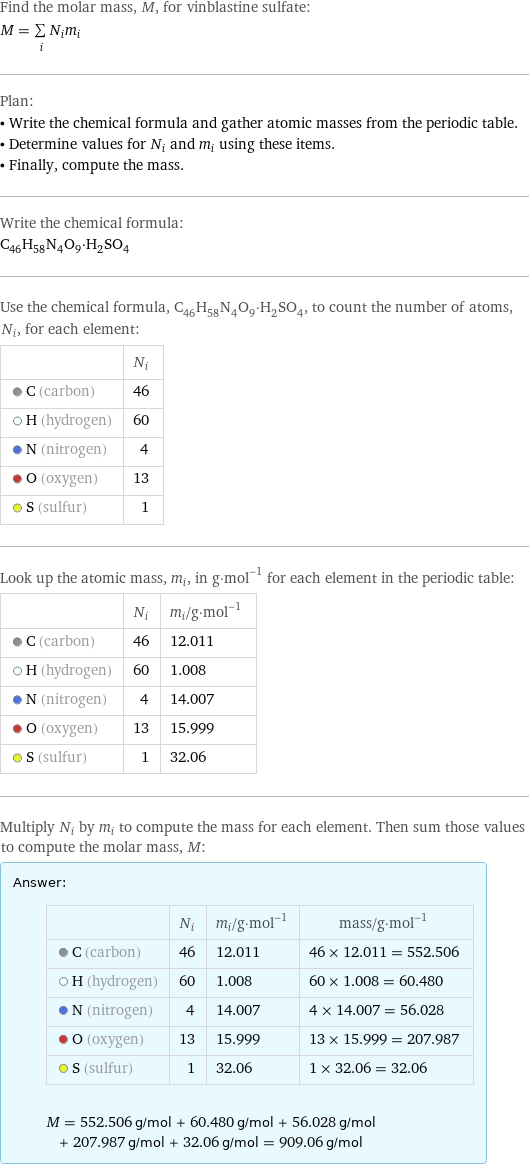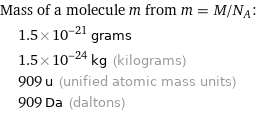Input interpretation

vinblastine sulfate | molar mass
Result

Find the molar mass, M, for vinblastine sulfate: M = sum _iN_im_i Plan: • Write the chemical formula and gather atomic masses from the periodic table. • Determine values for N_i and m_i using these items. • Finally, compute the mass. Write the chemical formula: C_46H_58N_4O_9·H_2SO_4 Use the chemical formula, C_46H_58N_4O_9·H_2SO_4, to count the number of atoms, N_i, for each element: | N_i C (carbon) | 46 H (hydrogen) | 60 N (nitrogen) | 4 O (oxygen) | 13 S (sulfur) | 1 Look up the atomic mass, m_i, in g·mol^(-1) for each element in the periodic table: | N_i | m_i/g·mol^(-1) C (carbon) | 46 | 12.011 H (hydrogen) | 60 | 1.008 N (nitrogen) | 4 | 14.007 O (oxygen) | 13 | 15.999 S (sulfur) | 1 | 32.06 Multiply N_i by m_i to compute the mass for each element. Then sum those values to compute the molar mass, M: Answer: | | | N_i | m_i/g·mol^(-1) | mass/g·mol^(-1) C (carbon) | 46 | 12.011 | 46 × 12.011 = 552.506 H (hydrogen) | 60 | 1.008 | 60 × 1.008 = 60.480 N (nitrogen) | 4 | 14.007 | 4 × 14.007 = 56.028 O (oxygen) | 13 | 15.999 | 13 × 15.999 = 207.987 S (sulfur) | 1 | 32.06 | 1 × 32.06 = 32.06 M = 552.506 g/mol + 60.480 g/mol + 56.028 g/mol + 207.987 g/mol + 32.06 g/mol = 909.06 g/mol
Unit conversion

0.9091 kg/mol (kilograms per mole)
Comparisons

≈ 1.3 × molar mass of fullerene ( ≈ 721 g/mol )

≈ 4.7 × molar mass of caffeine ( ≈ 194 g/mol )

≈ 16 × molar mass of sodium chloride ( ≈ 58 g/mol )
Corresponding quantities

Mass of a molecule m from m = M/N_A: | 1.5×10^-21 grams | 1.5×10^-24 kg (kilograms) | 909 u (unified atomic mass units) | 909 Da (daltons)

Relative molecular mass M_r from M_r = M_u/M: | 909